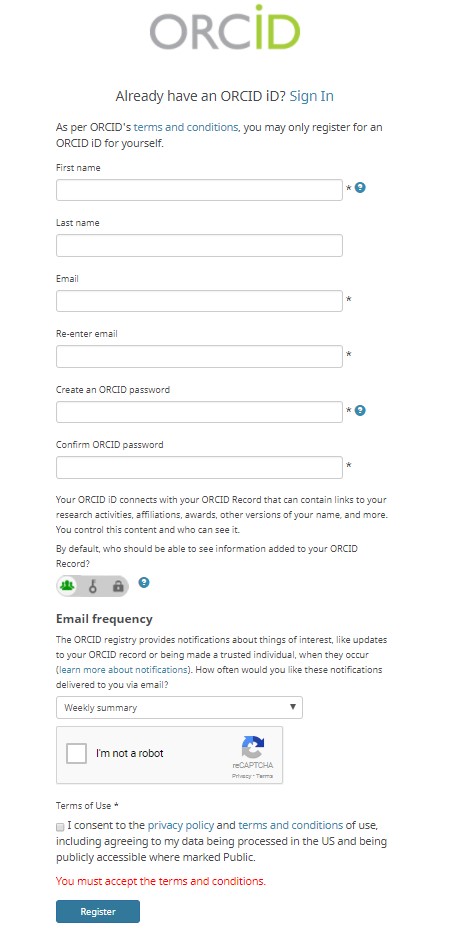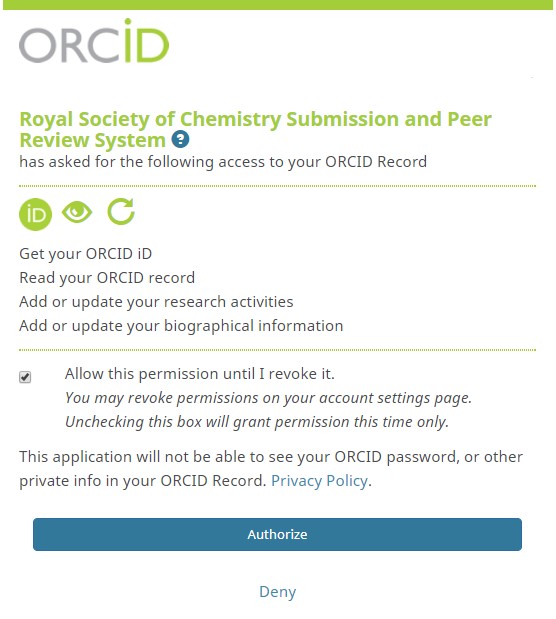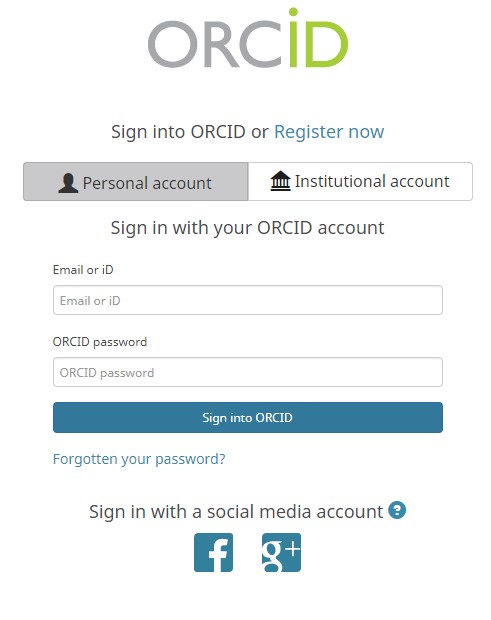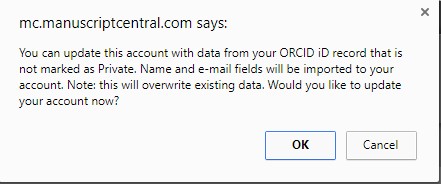Learn more about our publishing process such as our initial assessment of submissions, our journal transfer service and the publication of accepted manuscripts.
This page also outlines our editorial policies on prior publication, data and correction and retraction.
On this page
Initial assessment of submissions
Transparent peer review policy
Single-& double-anonymised peer review
Appeal procedure
Similarity Check
Transfer between Â鶹AV journals
Accepted manuscripts
CrossMark policy
Funding Data
Attribution identifiers
Correction & retraction policy
Inappropriate or offensive content
Author name changes after publication
Collection of gender, race and ethnicity information
Journal policy on prior publication
Data policy
Patents & intellectual property
Initial assessment of submissions
We are committed to publishing high quality new work that makes a significant contribution within the scope of its journals. In order to meet this aim, submitted manuscripts undergo initial evaluation by an editor to ensure that they meet essential criteria for publication in the journal.
Only those manuscripts that pass this initial review process will be forwarded to reviewers for further consideration.
This process provides a rapid decision to authors of those papers that are unsuccessful and reduces the burden on the reviewers.
A manuscript may be returned to the author(s) without external review if, in the opinion of the editor(s), one or more of the following apply:
- the manuscript clearly falls outside the scope of the journal
- the work is of poor scientific quality such that it is clearly not suitable for publication in a scientific journal
- the manuscript is of insufficient general interest for the journal and would be better suited to a more specialised journal
- the novelty of the work falls below that required for the journal
- the manuscript represents undue fragmentation of the research into multiple papers
- the manuscript contains redundant information or significant amounts of material that has already been published elsewhere or is under consideration by another journal
- the quality of the English in the manuscript is so poor as to render the science presented unclear
- the manuscript has already been reviewed and rejected by a different Â鶹AV journal, and the author(s) have made little or no attempt to address the advice that the editor and/or referees have provided already
- the conclusions drawn by the manuscript are well known or have been published previously.
Authors are also expected to abide by the Â鶹AV’s ethical guidelines as described in Author responsibilities.
Authors have the right to appeal against any decision taken on their manuscript at any stage; an appeal would be granted at the discretion of the Â鶹AV. Through the appeal process further opinion is sought on the manuscript's suitability for publication in the journal. After the appeal process the editor's decision is final.
Appeal procedure
Our appeal procedure provides authors with the opportunity to respond to the editorial decision on their manuscript. Authors have the right to appeal to the editor against any decision taken on their manuscript at any stage; an appeal will be considered at the discretion of the Â鶹AV.
How do I appeal?
Step 1: Send a rebuttal letter to the editor via the journal email. Your letter should explain clearly why you disagree with the decision on your manuscript, and should include a detailed response to any reviewers’ comments
Step 2: The editor will consider your appeal. All appeal requests are handled on a case by case basis and the editor's decision is final.
If your appeal is granted
Step 3: Your manuscript will undergo further assessment by an independent reviewer.
Step 4: The editor will make a final decision on your manuscript.
Comments and Complaints
Please visit our Comments & complaints page to contact us regarding any comments or complaints about any of our journals, including published articles.
Similarity Check
The Â鶹AV is a member of Similarity Check – a multi-publisher initiative to screen published and submitted content for originality.
Through Similarity Check, we use the iThenticate software to detect instances of overlapping and similar text in submitted or published manuscripts.
By depositing all of our content in the Similarity Check database we allow other Similarity Check members to screen their submissions against our published articles.
Further details on our plagiarism policies can be found in our Author responsibilities section.
Transfer between Â鶹AV journals
The Â鶹AV is committed to providing authors with a high level of customer service throughout the publication process. One of the ways we do this is to consider the suitability of a manuscript for another Â鶹AV journal if the manuscript is unsuitable for publication in the journal to which it was submitted originally.
When a paper is to be rejected from one Â鶹AV journal, then we would offer the author(s) the option to transfer the paper to one of our other journals for consideration, when this is appropriate. This offer may occur during the initial assessment of a manuscript or after reports on it have been received from reviewers. As part of the peer review process, the reviewers are asked to comment whether the manuscript would be more appropriate for one of our other journals.
An offer by the editorial office to transfer the manuscript to another journal is made in the decision letter to the corresponding author; the author decides whether or not to take up the offer and then selects the appropriate option provided in the letter. On acceptance of the offer the manuscript is transferred automatically to the new journal without the author needing to supply the submission information again.
The transferred manuscript will appear as a 'draft' in the author’s ‘Author Centre’ in the new journal, and the author will receive an email asking them to finalise the submission. The process provides a quick and easy route for these papers to be considered by another journal.
If the manuscript already has reports from reviewers then the author will be asked to upload the revised files. These files should include a summary of any new work added and a point by point response to the reviewers’ comments. Authors should be aware that the reviewers’ comments are transferred to the editor of the receiving journal together with the manuscript files. On submission to the new journal, the manuscript will then be assessed by an editor as to whether further peer review will be necessary.
Benefits for authors & reviewers
Transferring manuscripts between our journals has benefits for authors. When transferring to another journal the author does not need to submit the manuscript or provide the accompanying information again. During the initial assessment by the editor, identification of the most suitable journal for the manuscript optimises the evaluation process. If reports have already been received then further review may not be necessary after a transfer, at the discretion of the editor on the journal to which the manuscript has been transferred. A decision by the new journal about suitability of the manuscript for publication should be made more swiftly.
The transfer process also reduces the burden on reviewers. A paper that has been rejected may be submitted by the author to another journal where it would undergo evaluation again. By transferring between journals here we would be able to consider the reports received already, although some additional review may be necessary. Full peer review is not always necessary thereby reducing the number of reviews required and allowing a decision to be reached more quickly.
CrossMark policy
The Â鶹AV recognises the importance of the integrity and completeness of the scientific record to researchers and librarians and we attach the highest importance to maintaining trust in the authority of our electronic content.
is a multi-publisher initiative that provides a standard way for readers to locate the authoritative version of a piece of content. Applying the CrossMark icon is a commitment by us to maintain the content published and alert readers to changes if and when they occur.

Clicking on the CrossMark icon within an article will inform the reader of the current status of a document and whether an update or correction exists. It will also provide additional publication record information about the document, such as:
- Funding sources (Funding Data)
- Similarity Check deposition
- Associated articles
- Related data (supplementary information and crystal structure data)
- Identifiers (ORCID and ResearcherID)
- Copyright and licensing
- Publication history
The CrossMark icon will apply only to our content published after 14 July 2014.
Details of our correction and retraction policy can be found below.
Funding data
is a registry that provides a consistent way to report funding sources for published scholarly research. We collect funding information from our authors and match this information to funders listed in the Open Funder registry. This funding information is then made publicly available through Crossref's search interfaces for funders, colleagues and other interested parties to analyse.
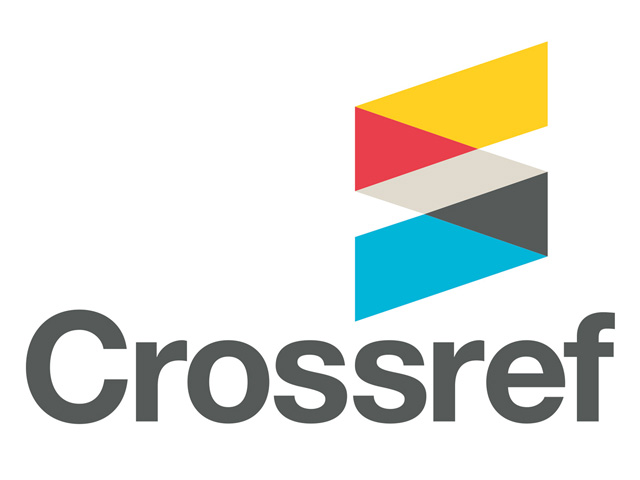
Attribution identifiers
(Open Researcher and Contributor ID) and are unique persistent digital identifiers that distinguish you from every other researcher and automatically links you and your professional activities – ensuring that your work is recognised.
ORCID
We require the submitting author to provide an ORCID iD when submitting a revised manuscript, and we also encourage all co-authors to link their ORCID iD to their account on our submission system.
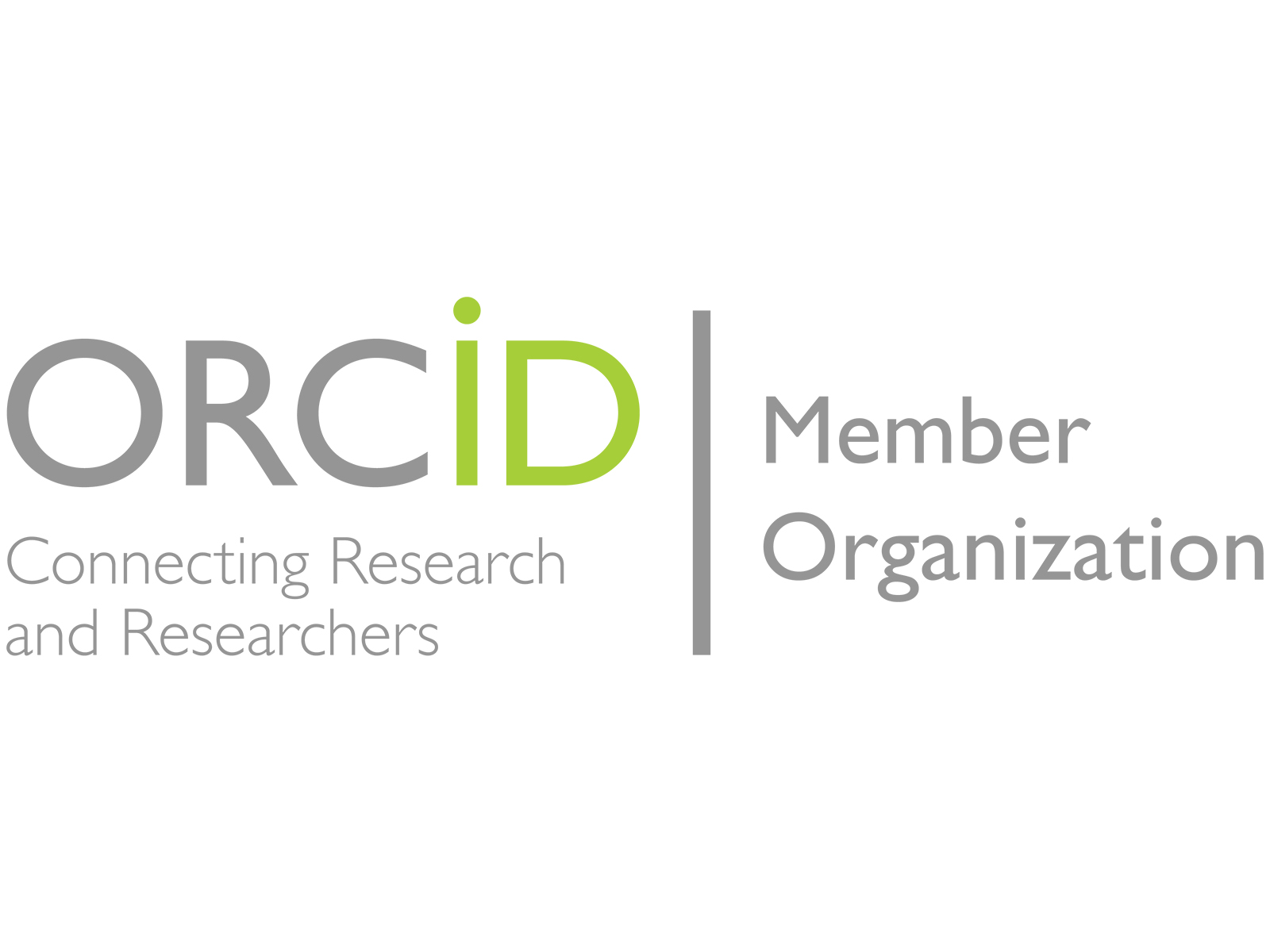
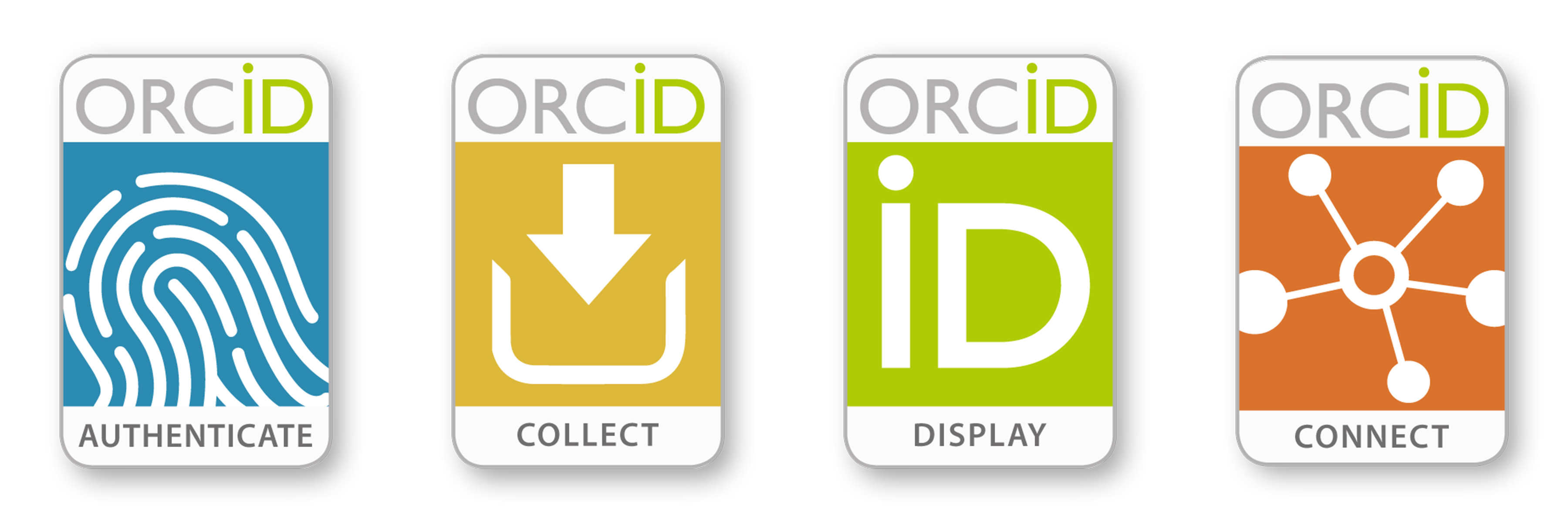
Correction & retraction policy
It is our policy not to amend, alter or remove the published scientific record, in line with the International Association of Scientific, Technical & Medical Publishers' (STM) guidelines:
Articles that have been published should remain extant, exact and unaltered to the maximum extent possible
(STM Guidelines on Preservation of the Objective Record of Science)
We will respond to any suggestions of scientific misconduct or to convincing evidence that the main substance or conclusions of a published manuscript is erroneous, usually through consultation with the author. This may require the publication of a formal ‘retraction’ or correction. We follow the Committee on Publication Ethics (COPE) as the basis for our best practice guidelines when investigating allegations of misconduct. An expression of concern may be published by the editor whilst an investigation into alleged misconduct or publication of erroneous data is ongoing.
Authors who wish to enquire about publication of a correction for their article, or who have serious concern that they believe may warrant retraction, should contact the journal editorial office.
We follow the for correcting and retracting articles, outlined below.
Expression of concern
We will consider issuing an expression of concern if:
- we receive inconclusive evidence of research or publication misconduct by the authors
- we receive evidence that the findings are unreliable but the authors' institution will not investigate the case
- we believe that an investigation into alleged misconduct related to the publication either has not been or would not be, fair and impartial or conclusive
- an investigation is underway but a judgement will not be available for a considerable time.
The expression of concern is free to view and is linked to the article of record to which it relates.
Correction
We will consider issuing a correction if:
- the scientific record is seriously affected, for example with regard to the scientific accuracy of published information
- a small portion of an otherwise reliable publication proves to be misleading (especially because of honest error)
- the author/contributor list is incorrect (i.e. a deserving author has been omitted or somebody who does not meet authorship criteria has been included).
We will not usually publish a correction that does not affect the contribution in a material way or if the issue does not significantly impair the reader's understanding of the contribution, such as a spelling mistake or grammatical error. The correction is free to view and is linked to the article of record that it corrects.
Retraction
In line with , we will consider issuing a retraction notice if:
- We have clear evidence that the findings are unreliable, either as a result of a major error (eg, miscalculation or experimental error) or as a result of fabrication (eg, of data) or falsification (eg, image manipulation)
- The publication constitutes plagiarism
- The findings have previously been published elsewhere without proper cross-referencing, permission or justification (that is, cases of redundant publication)
- The publication contains material or data without authorisation for use
- Copyright has been infringed or there is some other serious legal issue (eg, libel, privacy)
- The publication reports unethical research
- The publication has been published solely on the basis of a compromised or manipulated peer review process
- The author(s) failed to disclose a major competing interest (a.k.a. conflict of interest) that, in the view of the editor, would have unduly affected interpretations of the work or recommendations by editors and peer reviewers.
The retraction notice is free to view and is linked to the article of record that it retracts; the article of record will be digitally watermarked 'RETRACTED'.
Inappropriate or offensive content
Our aim is for all published material to be respectful, accurate and relevant. We have a shared responsibility to guard against all forms of discrimination or exclusion. As an author or reviewer, please consider that words, depictions and imagery have the potential to cause offence. The concept of offence/offensiveness is subjective, and may mean different things to different people, therefore there we need to consider how content might be perceived by others.
Terminology and expressed attitudes must show respect for the identity, experience and sensibilities of everyone.
Listed below are some indicators that can be used to help identify what may be concluded as inappropriate content. This list is indicative and not conclusive:
- Insulting, hostile, defamatory
- Discriminates, excludes, undermines
- Harmful, hateful
- Threatening, abusive
- Likely to be upsetting, insulting or objectionable to some or most people
- Perpetuate discriminatory and stereotypical ideas
- Harassment: unwanted [content] that makes others feel intimidated or humiliated
- Bigotry: animosity, hostility, malice, ridicule
- Intolerance
- Aberrations: depiction of ideas, beliefs, symbols or events
- Stereotypes: stereotype threat, assumptions
- Innuendo
- Derogatory demographic descriptors
- Material (images, video, audio, or text) that presents explicit/exploitive, obscene or degrading text, pictures, or illustrations*
- Any content that could reasonably offend someone on the basis of their age, gender, race, sexual orientation, religious or political beliefs, marital or parental status, physical features, national origin, social status or disability
*We are aware that some areas of research, such as animal experiments, can be considered controversial or offensive. We require that such work has been performed according to all relevant legal frameworks of the territory in which they take place, which will be clearly described in the manuscript or supporting information. All data will then be presented in an appropriate manner for the scientific content.
The Â鶹AV no longer considers submissions containing the Lena (sometimes ‘Lenna’) image. This decision has been taken in consultation with relevant parties and applies to all Â鶹AV journals.
This head crop picture of Lena Söderberg has been used as a standard picture in research papers in the fields of image processing and nanophotonics during the last fifty years. However, the image has attracted controversy in recent years as its history goes against efforts to promote equality for women in science and engineering, and an increasing number of alternative images with comparable, if not superior, scientific value have become available.
This policy will not be applied retrospectively, but we would ask authors submitting to our journals to use alternative images, such as those found on the .
Author name changes after publication
Authors may change their name for many reasons including marriage, divorce, religion, gender identity and other personal reasons. The Â鶹AV is committed to respecting the rights of our authors to their own identities, fully supporting author inclusion and ensuring that authors receive credit for all their work. It is therefore our policy to facilitate changes to author names, email addresses, biography photos, pronouns, and any other identifiers that may be necessary as a result of a change in author name.
These changes will be made directly to the article pdf and html. We will re-send article metadata to abstracting and indexing services such as Scopus and Web of Science, although we acknowledge that we are not able to enforce replacement of the metadata on their platforms.
The Â鶹AV will retain an original version of the paper in its records, but this will not be made publicly available. This is to ensure that changes are made accurately and so that any changes can be reverted in future if requested.
Authors wishing to make such changes should contact namechanges@rsc.org or the editorial office for any Â鶹AV journal in which they have published.
Please note that we will not normally facilitate changes to correct spelling errors that were present in the author versions, out-of-date affiliation details, or changes to email addresses that do not result from name changes. We are also unable to correct citations to papers in which a name change has been made.
Collection of gender, race and ethnicity information
We are committed to improving inclusion and diversity within chemical sciences publishing. As part of our work in this area, we ask authors, reviewers and editors to provide information on their gender, race and ethnicity. The information we gather is used to analyse trends within our journals and to identify where improvements are needed. We ask authors to self-describe their gender, race and ethnicity – we also give the option of “prefer not to say”.
Diversity data includes information that is both personal and sensitive. Therefore, the utmost care is taken in protecting it. Individuals’ ethnic, racial, or gender identities will in no way be used when evaluating journal submissions; these data will only be reported and analysed at the aggregate level in order to improve our policies and processes. For more information about how we use your data, please see the Â鶹AV’s Privacy Policy and our FAQs.
Journal policy on prior publication
As scientific research is becoming more open and discoverable, the Â鶹AV supports our community of chemical scientists in sharing new research findings before and after publication through a variety of methods.
Authors publishing in our journals may present their research ahead of publication in the following ways.
- Through the deposition of a preprint version of the article in commercial and non-commercial repositories (e.g. ArXiv, ChemRxiv), institutional repositories or authors’ individual websites. A preprint is defined here as an un-refereed author version of the article; commercial and non-commercial repositories are defined here as any platform or archiving service that makes digital content free to deposit and access. Preprints deposited in can be revised, but must still be a pre-acceptance version.
- At scientific conferences; this includes recorded presentations, poster presentations and abstracts that are made openly available on-line.
- In commercial or non-commercial databases (data without interpretation, discussion, conclusions or context with a wider experimental project).
- In an open electronic lab notebook.
- In blogs, wikis, tweets, and other informal communication channels.
- As a thesis or dissertation published as part of an academic or professional qualification, in print and on-line.
- In any digital medium which is operated by the Â鶹AV, excluding journals, books and magazines.
We will not consider for publication work that has been previously published, or is under consideration for publication, in another journal. Full papers as a follow up to a previously published communication will be considered for publication in suitable Â鶹AV journals, subject to the new work meeting the journal’s criteria.
Please consult the journal’s editor if you have questions about whether or not a particular use constitutes prior publication.
For information about what you can do with your article following acceptance and publication see our guidance on deposition and sharing rights.
Naming of territories
The Â鶹AV remains neutral with regards to jurisdictional claims in our published material, including the naming of territories in maps and institutional affiliations. Where a journal is co-owned by and/or published on behalf of a third party, we respect the third party’s responsibility to comply with relevant local laws and regulations.
Data sharing policy
The Â鶹AV believes that where possible, all data associated with the research in a manuscript should be Findable, Accessible, Interoperable and Reusable (FAIR), enabling other researchers to replicate and build on that research.
We strongly encourage authors to deposit the data underpinning their research in appropriate repositories.
For all submissions to Â鶹AV journals, any data required to understand and verify the research in an article must be made available on submission. To comply, we suggest authors deposit their data in an appropriate repository. Where this isn’t possible, we ask authors to include the data as part of the article Supplementary Information.
See our Data sharing guidance for more details on specific data types and recommended repositories and the requirement to include a data availability statement (DAS) in all articles.
Some journals may have additional subject requirements for both sharing and/or publishing supporting data, so please ensure you check the journal specific guidelines.
Please refer to our Experimental reporting requirements for further guidance on the experimental details and observations you should include in your manuscript or Supplementary Information.
Patents & intellectual property
Due to our journals’ fast times to publication, authors are advised to resolve any pending intellectual property or patent applications before they submit their article, so they do not contravene the terms of any outstanding applications. Accepted manuscripts are published online less than 24 hours after acceptance; while the version of record is published online within a few days of receiving proof corrections.
Contact us
- Tel:
- +44 (0) 1223 432176
- Email:
- Customer Services team, Journals
Share
Advertisement

